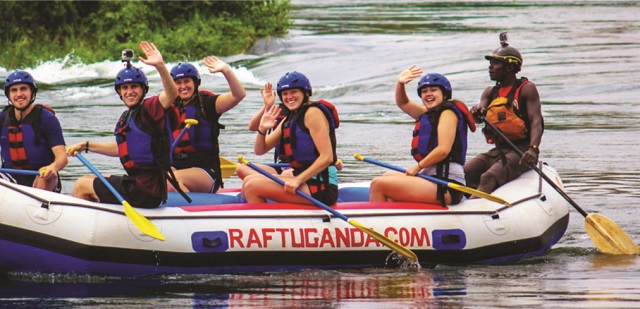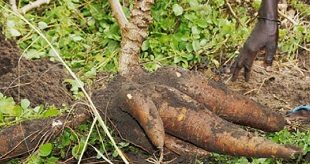
Country tops on natural resources, price competitiveness
Kampala, Uganda | THE INDEPENDENT | The latest Travel & Tourism (T&T) Competitiveness Report 2019 shows the challenges of implementing a business strategy for Uganda’s tourism sector.
The T&T Competitiveness Index (TTCI) measures factors and policies that enable the development and competitiveness of a country’s travel and tourism sector.
It ranks Uganda at position 112 on T&T competiveness out of 140 countries surveyed. That is 25 spots ahead of Burundi which at 137 is the worst ranked in East Africa and 30 spots behind Kenya which is the best ranked. Rwanda is at 107 and Tanzania at 95.
This report is important for Uganda which has been pushing hard to improve its T&T sector competitiveness. The sector earned the country US$1.3 billion in FY2018/19 from a low US$498 billion ten years ago. It projected to bring in US$2.7 billion annually in the short-run. In 2018 the country recorded 1.6 million international tourist arrivals.
Uganda has recently launched a national airline specifically to boost its travel and tourism, pumped an extra Shs60 billion to fix so-called tourism roads, and concentrated on developing hotel infrastructure near nature reserves, and rehabilitation of new and old cultural and heritage sites.
To get the full picture of what the ranking means starts by noting that the sub-Saharan region where Uganda is located geographically scores the least on the T&T ranking. Sub-Saharan Africa comprises 34 of the ranked countries or just 24% but 16 of the 20 lowest ranked countries are from the region. Yemen in the Middle East is the worst ranked at 140 but Chad is right next at 139.
The ranking has four general cluster indices, broken into 14 pillars, namely: Enabling Environment (Business Environment, Safety and Security, Health and Hygiene, Human Resource and Labour market, ICT Readiness), Policy and Enabling Environment (Prioritisation of T&T, International Openness, Price Competitiveness, and Environmental Sustainability) , Infrastructure (Air transport, Ground and Port, Tourism Service Infrastructure), and Natural and Cultural Resources (Natural resources and Cultural resources and business travel).
The top ranked countries on the index; Spain, France, Germany, Japan, and USA are not necessarily the best on any of the 14 pillars. Instead, they score highly in each while other countries score highly on one pillar but are poor on another.
The leaders to benchmark on some of the pillars are: enabling environment (Switzerland), Business Environment (Hong Kong), Safety and Security (Finland), Health and Hygiene (Austria), Human Resource and Labour market (USA), ICT Readiness (Hong Kong), Policy and Enabling Environment (New Zealand) (Prioritisation of T&T (Malta), International Openness (New Zealand), Price Competitiveness (Iran), and Environmental Sustainability (Switzerland) , Infrastructure (USA), Air transport (Canada), Ground and Port (Hong Kong), Tourism Service Infrastructure (Portugal)), and Natural resources (Mexico) and Cultural resources and business travel (China).
Uganda scores highly
Since each of the four clusters has a weight of 25%, it means the Natural and Cultural Resources cluster carries the most weight – and Uganda scores very highly here.
This cluster covers number of World Heritage natural sites, known species, total protected areas, natural tourism, and attractiveness of natural assets. Based on these, Uganda scores very highly at number 38 globally. Regionally, however, the score is no so impressive since neighbouring countries are equally, if not better, endowed than Uganda. Tanzania is ranked number 12 globally followed by Kenya at 18. Only Rwanda at 88 and Burundi at 124 lag behind Uganda.
But Uganda has a bonus. It is among the most competitive on price. Only eight African countries are more competitive on price; three of them in North Africa and five in Sub-Saharan Africa. All of them do not have natural resources equal to Uganda. Should Uganda, therefore, strategise to compete on price or on natural resources?
Kenya and Tanzania which have more natural resources are a bit more costly to visit. Kenya is ranked 90 globally and Tanzania 65. So Uganda at 39 easily beats them on price competiveness. But winning on price could be a poisoned chalice. It might mean attracting the cheapest travellers looking for a bargain. In this case, Uganda could be pricing it rich natural heritage cheaply.
Compare that with Kenya which sells enjoyment of its natural resources for a premium. It is one of the most expensive places to visit in Africa at rank 110 globally. Apart from a few odd destinations, only Seychelles and Mauritius are more expensive.
Kenya’s strategy appears to make sense because the most expensive destinations are the UK and Switzerland, which are among the world’s top 10 tourism and travel destinations. If you have it, do not undersell it, appears to be the logic here.
Then there are countries like Rwanda. It performs very poorly on the natural resources but is quite most expensive in the East African region, at rank 90 just behind Kenya. Why? The country has positioned itself well in other areas. Take Safety and Security. Rwanda is ranked at number 31 globally and the second most competitive African country in this area after Morocco. Mauritius follows Rwanda at a distant 46 rank. Uganda is at 116, Kenya 119, and Tanzania at 97.
Rwanda also scores highly on Business Environment. It is ranked 35 globally. That is third best position on the African continent. Only Mauritius and Botswana are more competitive.
Rwanda scores well on environmental sustainability; where it is ranked globally at number 38. That is the fourth best rank in Sub-Saharan Africa.
Then Rwanda throws in median perform on International Openness (ranked 73), Human Resource (ranked 86), and Price Competitiveness. Even when it scores dismally on other pillars of competitiveness, Rwanda emerges as third most competitive country in the East African region after Kenya and Tanzania. It is more competitive than Uganda and Burundi.
 The Independent Uganda: You get the Truth we Pay the Price
The Independent Uganda: You get the Truth we Pay the Price


